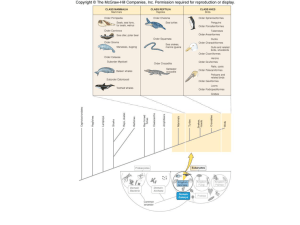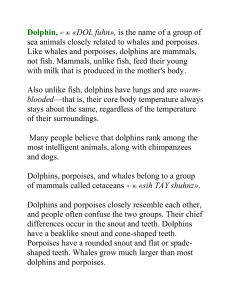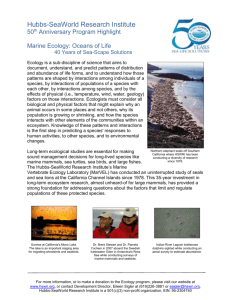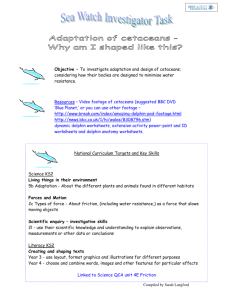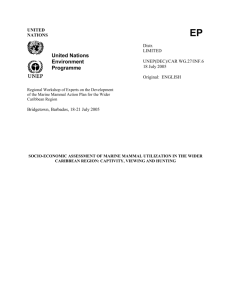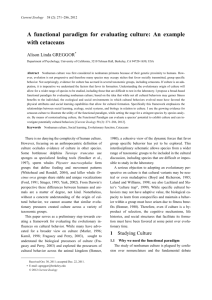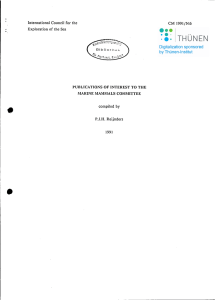Marine Vertebrates: Lecture 3
advertisement
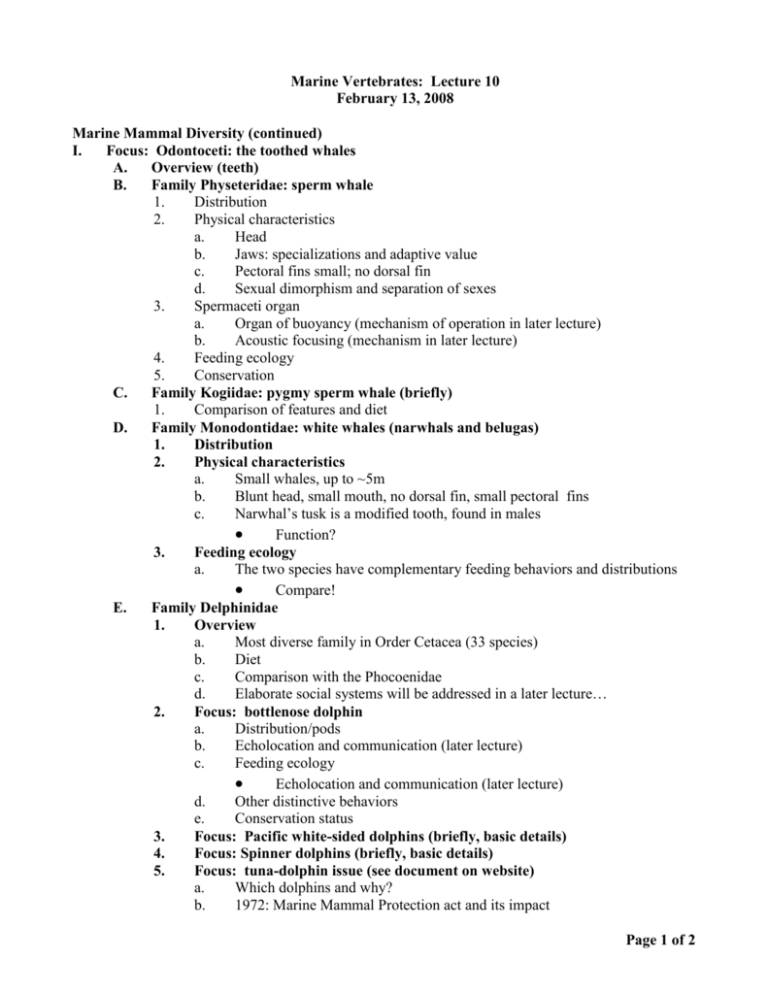
Marine Vertebrates: Lecture 10 February 13, 2008 Marine Mammal Diversity (continued) I. Focus: Odontoceti: the toothed whales A. Overview (teeth) B. Family Physeteridae: sperm whale 1. Distribution 2. Physical characteristics a. Head b. Jaws: specializations and adaptive value c. Pectoral fins small; no dorsal fin d. Sexual dimorphism and separation of sexes 3. Spermaceti organ a. Organ of buoyancy (mechanism of operation in later lecture) b. Acoustic focusing (mechanism in later lecture) 4. Feeding ecology 5. Conservation C. Family Kogiidae: pygmy sperm whale (briefly) 1. Comparison of features and diet D. Family Monodontidae: white whales (narwhals and belugas) 1. Distribution 2. Physical characteristics a. Small whales, up to ~5m b. Blunt head, small mouth, no dorsal fin, small pectoral fins c. Narwhal’s tusk is a modified tooth, found in males Function? 3. Feeding ecology a. The two species have complementary feeding behaviors and distributions Compare! E. Family Delphinidae 1. Overview a. Most diverse family in Order Cetacea (33 species) b. Diet c. Comparison with the Phocoenidae d. Elaborate social systems will be addressed in a later lecture… 2. Focus: bottlenose dolphin a. Distribution/pods b. Echolocation and communication (later lecture) c. Feeding ecology Echolocation and communication (later lecture) d. Other distinctive behaviors e. Conservation status 3. Focus: Pacific white-sided dolphins (briefly, basic details) 4. Focus: Spinner dolphins (briefly, basic details) 5. Focus: tuna-dolphin issue (see document on website) a. Which dolphins and why? b. 1972: Marine Mammal Protection act and its impact Page 1 of 2 F. G. Mandated the reduction of bycatch to “insignificant levels approaching zero” U.S. first developed policies for its own boats Observers some changes in gear some alteration of fishing methods c. Further international involvement and actions d. Current status e. So what should you do if you love tuna and you love dolphins? f. Captive dolphin encounters: benefits and problems g. Wild dolphin encounters (yes!) 6. Focus: Orcas! a. Distribution b. Physical characteristics c. Feeding ecology d. Conservation status/captivity issues (briefly) Family Phocoenidae: porpoises 1. Overview 2. Focus: harbor porpoise (briefly) a. Distribution b. Diet Family Zyphiidae: beaked whales (briefly) 1. Overview 2. Feeding ecology 3. Conservation status Marine Mammal references (all lectures) Carwardine M, 1999. Whales, Dolphins and Porpoises. Checkmark Books: New York, 240 pages. Hoelzel, A. Rus (ed.), 2002. Marine Mammal Biology: An Evolutionary Approach. Blackwell: University of Durham, UK, 432 pages. Reynolds JE, Rommel SA, 1999. Biology of Marine Mammals. Smithsonian Institution: Washington DC, 578 pages. Riedman M, 1990. The Pinnipeds: Seals, Sea Lions and Walruses. University of California Press: Berkeley and Los Angeles, 439 pages. Page 2 of 2
